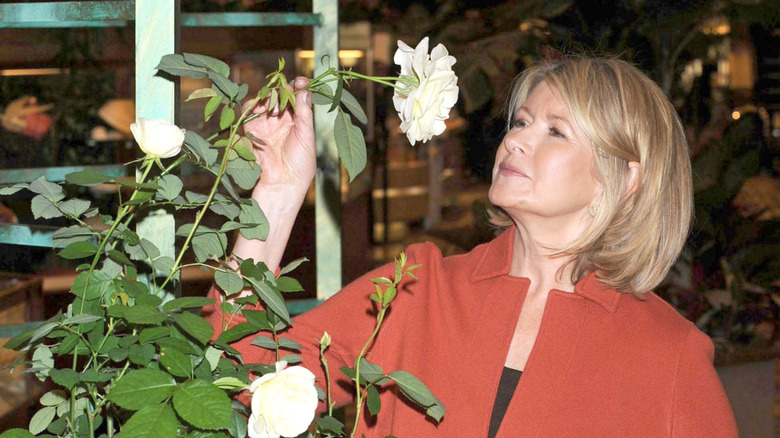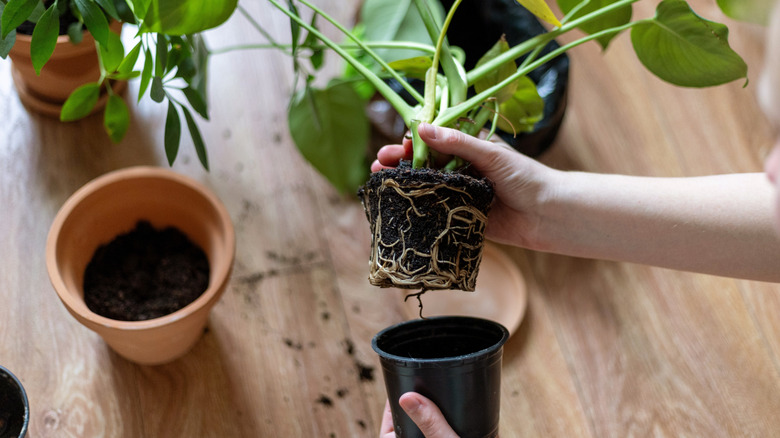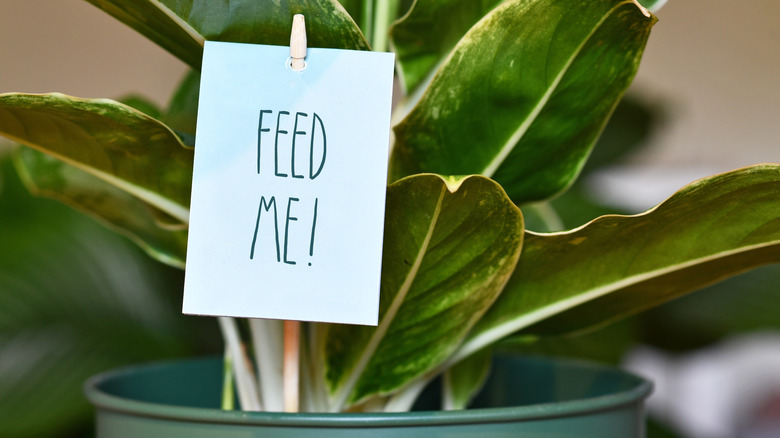Martha Stewart's Tips Make Repotting Your Favorite Plants A Breeze
We may receive a commission on purchases made from links.
Repotting your beloved plants doesn't have to be a dirt-flinging disaster that leaves you mounds of spilled soil and a week's worth of frustration. With Martha Stewart's much-appreciated plant wisdom, you can easily repot your favorite plants like a pro without damaging them during the process. She offers great planting tips for repotting plants with ease and quickness. These tips include squeezing and whacking the bottoms of plastic containers for easy plant removal, matching your soil's depth to that of the plant's root ball, topping off with a slow-release fertilizer, and more.
Even if you have the easiest houseplants to manage, these hacks may come in handy for your next plant's move-out date. Whether you are repotting your plants to refresh the soil mix, introduce store-bought plants to new permanent planters, transition ones that have outgrown their old living arrangements, or just want to upgrade to a fancier pot, Stewart's tips are simple, easy to follow, and surprisingly satisfying.
Removing plants from pots and adding soil
The whack-it-and-squeeze-it hack for easily removing plants and root balls is ideal for plastic containers. Because the plant is so tightly packed, you'll need to create an air pocket under the root ball to break its seal. Lay the plastic container sideways on an edge, like the rim of a larger (and sturdy) pot. While rotating it, give the bottom a few light taps and the sides some squeezes, then turn it upside down. Within seconds, the plant should fall out of its container. This hack also works on mini container trays. First, pull off any hanging roots from the bottom of the container. Then, squeeze the sides of the tray and carefully pull out the small plant by its main stem.
Ideally, you'll need to dig a hole as deep as your plant's root ball so the soil is level with the top of the root ball. Burying your plant too deeply can bring about root rot, as the plant's crown will absorb too much water. You also don't want the soil to be level with the pot's top, as this can cause an overflow with watering, so be sure to leave at least 1 inch of space
Martha Stewart also has a great recommendation to help you save on soil to easily fill those larger planters and reduce the effort it takes to transport multiple bags of soil for repotting. The solution is to fill the bottom space with recycled bubble wrap, packing peanuts, or other lightweight packing materials. Then, use landscape cloth as a barrier on top of the filler to prevent soil from spilling to the pot's bottom.
Adding fertilizer and maximizing planter space
Plants may face challenges when adapting to their new soil conditions, and sometimes they may develop transplant shock after the repotting process. Martha Stewart proposes adding a slow-release plant food to the newly potted plant. Because, after all, why not prep your soil for successful planting? Slow-release fertilizers allow a new plant to absorb nutrient levels that are steady and unburdensome enough for roots to reestablish themselves without overwhelming them. Scotts all purpose plant food or GardenWise Store's 10-10-10 slow-release formulas are great plant food options for this task.
Looking to maximize planter space in a large planter pot? Need a place for those smaller plants to go? Consider placing these smaller plants in a pot with a bigger plant. This space-saving idea creates a cool orbital effect where surrounding smaller plants, especially those with contrasting colors or shapes, complement the larger plant. You can try this in medium and larger-size pots to create a more eclectic and edgy plant showcase in your home or outdoor area.


